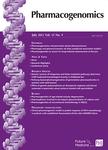版权所有:内蒙古大学图书馆 技术提供:维普资讯• 智图
内蒙古自治区呼和浩特市赛罕区大学西街235号 邮编: 010021

作者机构:Univ Tokyo Adv Sci & Technol Res Ctr Genome Sci Div Meguro Ku Tokyo 1538904 Japan Nihon Univ Sch Med Dept Digest Surg Itabashi Ku Tokyo 1738610 Japan
出 版 物:《PHARMACOGENOMICS》 (药物基因组学)
年 卷 期:2012年第13卷第2期
页 面:191-199页
核心收录:
学科分类:1007[医学-药学(可授医学、理学学位)] 10[医学]
基 金:Ministry of Education, Culture, Sports, Science and Technology (MEXT), Japan [20221009, 23591972] National Institute of Biomedical Innovation (NIBIO), Japan Grants-in-Aid for Scientific Research [23591972, 20221009] Funding Source: KAKEN
主 题:anticancer therapy ensemble method expression array machine-learning algorithm personalized therapy predictor genes
摘 要:Stratification of patients for multidrug response is a promising strategy for cancer treatment. Genome-based prediction models have great potential for this purpose because the extent of drug sensitivity may be attributed to the heterogeneity of the underlying genetic characteristics of cancer. However, microarray data is difficult to analyze and is not reproducible. Several machine-learning algorithms have therefore been developed in a repeatable manner. Random forests algorithm, which uses an ensemble approach based on classification and regression trees, appears to be superior for predicting multidrug sensitivity. This is because ensemble methods are more effective when there are much more predictors than samples. Here, we review recent advances in the development of classification algorithms using microarray technology for prediction of anticancer sensitivity, discuss the availability of ensemble methods for prediction models, and present data regarding the identification of potential responders to FOLFOX therapy using random forests algorithm.